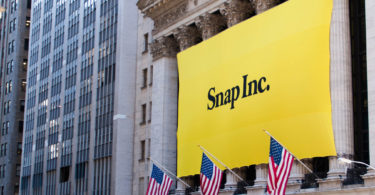The stock market volatility we’ve been seeing recently may be a taste of things to come over the next few weeks. The election, and its aftermath, could contain a few surprises that might shock the financial markets, at least temporarily.

In fact, you could say that volatility is about to enter a new bull market. At least, that’s my expectation.
The modern U.S. political climate has probably never been more polarized than it is today. Both sides of the political spectrum tend to regard one another with a mixture of contempt and disgust — and neither side seems eager to seek compromise.
Gone are the days when the Democrat Speaker of the House Tip O’Neill would go out for dinner and cocktails (mostly cocktails) with his Republican colleagues.
Instead, our current political landscape has become as combustible as the underbrush that is fueling the wildfires that are raging just a few miles away from me. And as we all know, once a wildfire starts, it is very difficult to contain.
Therefore, it is possible that one or more postelection firestorms fans out into the financial markets and singes share prices.
As a nation, we will ultimately bridge our differences. And as we collectively wrestle with this chapter in our history, we will once again resemble the United States of America, rather than the divided states.
In other words, our current political turmoil may be somewhat chaotic and unnerving, but it won’t be fatal.
Nevertheless, the risk is certainly not zero that our political discord might rattle the financial markets between now and Inauguration Day. Guarding against that risk is no small task, which is why most investors will probably just hunker down for whatever trouble may be heading our way … and ride it through to the other side.
And who knows, the stock market might just breeze through the couple of months unscathed. Let’s hope so.
However, a period of turbulence looks likelier than not.
So today, let’s talk about how to hedge against that possibility …
Eight Ways to Make Money in a Turbulent Market
Investors who wish to err on the side of caution could consider one or more of the following hedging tactics:
- Selling stocks to raise cash
- Buying put options
- Selling call options
- Selling short individual stocks or exchange-traded funds (ETFs)
- Buying “inverse” ETFs that bet against a specific stock market index or sector
- Buying gold
- Buying “volatility” ETFs or exchange-traded notes (ETNs) that bet on rising volatility
- Buying long-short ETFs or funds
Each of these hedging tactics can provide some measure of protection during a stock market selloff. But Hedge No. 1 — selling stocks to raise cash — is the one and only surefire hedging tactic.
Because it replaces stocks with cash, it moves some portion of your portfolio out of harm’s way. That’s why I usually recommend this simple hedge for most investors. If you’re genuinely worried about the prospect of a selloff, sell some of your stock holdings. Period.
But for those folks who wish to remain invested and not raise cash, let’s focus on just one of the hedges from the list above: No. 7 — buying “volatility” ETFs or ETNs that bet on rising volatility.
These somewhat exotic securities rise in price whenever the stock market falls, so theyprovide an interesting way to hedge a portfolio.
Regular readers of Smart Money may recall that I highlighted these quirky securities in a column last spring. So if the next few paragraphs seem vaguely familiar, feel free to skip ahead. Alternatively, you can review the content for “extra credit.”
The mechanism behind volatility ETFs and ETNs is a bit complicated, so let me try to simplify it a bit. When investors talk about volatility as something that can be bought or sold, they usually are talking about the CBOE Volatility Index (INDEXCBOE:VIX).
The VIX, also known as the “fear gauge,” tries to put a hard number on the average level of fear among stock market investors. To arrive at this hard number, the VIX tracks the pricing of certain put and call options on the S&P 500 Index.
When the stock market is falling, investor demand for “protection” increases, which causes option prices to rise. The more that people desire a certain product, the higher the price goes. That’s simple supply and demand.
So in this case, when option prices rise, the VIX rises.
Therefore, a high VIX reading indicates a high level of investor fear, and a low reading indicates a low level of fear. When these readings reach extreme levels, either high or low, the stock market tends to reverse direction… at least for a while.

Volatility-based ETFs and ETNs enable investors to ride the ups and downs of stock market volatility and, hopefully, profit from them.
At least three different ETFs/ETNs track the VIX. All of these securities delivered the goods during the stock market’s steep slide in March. For example, the ProShares VIX Short-Term Futures ETF (NYSEARCA:VIXY) soared nearly 500% in a matter of days.
A gain of that size can come in handy during a stock market selloff.
But be forewarned …
A Stock Market “Fire Insurance Policy”
When the stock market is rising, these securities produce investment results that range from bad to horrible.
Since the day VIXY peaked last March, it has tumbled 65%. That’s what happens when you bet on falling share prices … and they go up instead.
So if you’re hoping to profit by using these VIX funds, make sure that your market timing skills are nearly flawless.
Alternatively, you could buy call options on one of these ETFs, instead of buying the ETF itself. A call option limits your potential loss to the price of the option, but still provides ample profit potential if the stock market falls out of bed.
But I must emphasize that a hedging trade like this is intended to function as a partial insurance policy against portfolio-wide losses. And like every insurance policy you ever buy, you hope the money you spend buying it is “wasted money.”
Out here in California wildfire country, I’m grateful for every single year that I “waste money” on a fire insurance policy that I never have to use.
This trade is similar. It is intended to hedge a portfolio. It is not intended to be a naked speculation.
Read Next: An instant $252 using Apple?!
Dear Reader,
Would you like to know how to generate instant cash from a wide range of stocks…
But without investing a single dime upfront?
This has nothing to do with dividends… taking out a loan… or anything like that.
Best of all, anybody can learn how to do it.
It doesn’t matter if you’re retired… or planning to retire.
It doesn’t matter if you don’t have millions to invest…
What you need is about 10 seconds to execute this simple financial maneuver…
And you could be generating $252… $137… even $2,721…
In the next hour.








